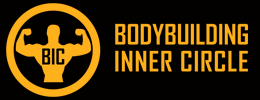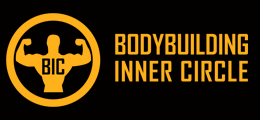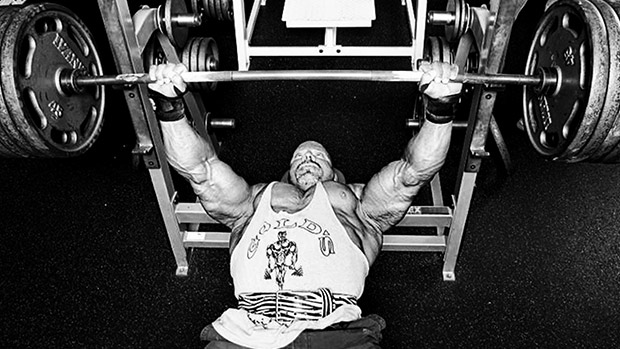Strength training is a fundamental aspect of bodybuilding that allows individuals to build muscle, increase strength, and improve overall physical performance. For beginners in bodybuilding, it’s essential to approach strength training with the right techniques and strategies to maximize results while minimizing the risk of injury. In this article, we will provide you with valuable tips and guidance to kickstart your journey in strength training effectively.
Introduction: The Importance of Strength Training
Strength training forms the foundation of bodybuilding and plays a crucial role in achieving optimal muscle development and strength gains. It involves performing exercises that target specific muscle groups, challenging them to adapt and grow over time. Apart from aesthetic benefits, strength training offers numerous advantages, including improved bone density, enhanced metabolism, increased functional strength, and reduced risk of injury.
Setting Realistic Goals
Before diving into strength training, it’s important to establish realistic goals that align with your aspirations and current fitness level. Setting attainable targets helps maintain motivation and allows you to track progress effectively. Whether your aim is to gain muscle mass, increase overall strength, or improve athletic performance, defining clear objectives will guide your training regimen.

Understanding Proper Form and Technique
Proper form and technique are crucial in strength training to ensure safety and maximize the effectiveness of each exercise. Prioritize learning the correct form for each movement, focusing on factors such as posture, range of motion, and muscle activation. Performing exercises with improper form can lead to injuries and hinder progress.
Starting with Compound Exercises
For beginners, it’s advisable to begin with compound exercises that engage multiple muscle groups simultaneously. Compound movements, such as squats, deadlifts, bench presses, and overhead presses, provide a solid foundation for overall strength development. These exercises promote efficient muscle recruitment and stimulate the release of anabolic hormones.
Gradually Increasing Weights
Progressive overload is a key principle in strength training. To continually challenge your muscles and promote growth, it’s essential to progressively increase the weights you lift over time. Begin with lighter weights to master proper form, then gradually add resistance as you become more comfortable and proficient in each exercise.

Focusing on Progressive Overload
Progressive overload involves consistently increasing the demands placed on your muscles during training. You can achieve this by adding more weight, increasing the number of repetitions, or reducing rest periods between sets. This approach ensures continuous adaptation and prevents stagnation in your progress.
Allowing Sufficient Rest and Recovery
Rest and recovery are often overlooked but vital aspects of strength training. Your muscles need time to repair and grow stronger after intense workouts. Aim for 48-72 hours of rest between training sessions targeting the same muscle group. Additionally, prioritize quality sleep, adequate hydration, and a nutritious diet to support optimal recovery.
Incorporating Cardiovascular Exercise
While strength training is the primary focus for beginners in bodybuilding, incorporating cardiovascular exercise is essential for overall fitness and cardiovascular health. Engaging in activities like brisk walking, cycling, or swimming for at least 150 minutes per week can help improve cardiovascular endurance and promote fat loss.

Balancing Training and Nutrition
To maximize the benefits of strength training, it’s crucial to fuel your body with the right nutrients. Consume a balanced diet that includes lean proteins, complex carbohydrates, healthy fats, and an abundance of fruits and vegetables. Adequate protein intake is particularly important for muscle repair and growth.
Listening to Your Body
Listening to your body’s signals is essential in avoiding injuries and preventing overtraining. If you experience persistent pain or discomfort, it’s important to address it rather than pushing through. Pay attention to your energy levels and adjust your training intensity or schedule accordingly.
Seeking Professional Guidance
If you’re new to strength training or feel unsure about proper techniques, seeking guidance from a qualified fitness professional can be immensely beneficial. A personal trainer or strength coach can provide personalized advice, create a tailored workout program, and ensure you’re performing exercises correctly to maximize results while minimizing the risk of injury.

Staying Consistent and Patient
Consistency is key when it comes to strength training. Building muscle and strength takes time and dedication, so it’s important to stay committed to your training routine. Results may not come overnight, but with persistence and patience, you will see progress and achieve your goals.
Overcoming Plateaus
At some point, you may encounter plateaus where progress seems to stall. To overcome plateaus, consider incorporating techniques such as deloading (reducing training intensity for a brief period), changing exercises, adjusting rep ranges, or implementing advanced training methods like supersets or drop sets. These strategies can help break through performance plateaus and stimulate new muscle growth.
Incorporating Variation in Your Routine
To keep your workouts engaging and prevent boredom, incorporate variation into your training routine. Explore different exercises, rep ranges, training modalities (e.g., free weights, machines, bodyweight), and workout formats (e.g., circuit training, interval training). Adding variety challenges your muscles in new ways, stimulates growth, and keeps you motivated.
Monitoring and Tracking Progress
Monitoring and tracking your progress is crucial for assessing the effectiveness of your training program. Keep a workout journal or use fitness tracking apps to record your exercises, weights, sets, and repetitions. Regularly evaluate your progress, celebrate achievements, and make necessary adjustments to optimize your training.
Conclusion
Embarking on a strength training journey as a beginner in bodybuilding can be both exciting and challenging. By following these tips, setting realistic goals, and staying consistent, you can lay a solid foundation for muscular development, strength gains, and overall fitness. Remember to prioritize safety, listen to your body, and seek guidance when needed. With dedication and perseverance, you’ll be well on your way to achieving your bodybuilding goals.
FAQs
1. How often should beginners engage in strength training?
Beginners should aim for two to three strength training sessions per week, allowing sufficient rest days in between to promote muscle recovery and growth.
2. Can strength training help with weight loss?
Yes, strength training can aid in weight loss by increasing muscle mass, which boosts metabolism and enhances fat burning.
3. Is it necessary to lift heavy weights as a beginner?
While gradually increasing weights is important, beginners should focus on proper form and technique before attempting heavy loads to minimize the risk of injury.
4. Can women benefit from strength training?
Absolutely! Strength training offers numerous benefits for women, including increased bone density, improved body composition, and enhanced overall strength.
5. How long does it take to see results from strength training?
Results vary depending on factors such as genetics, nutrition, and consistency. Generally, noticeable improvements can be seen within a few weeks to a couple of months of regular training.













































